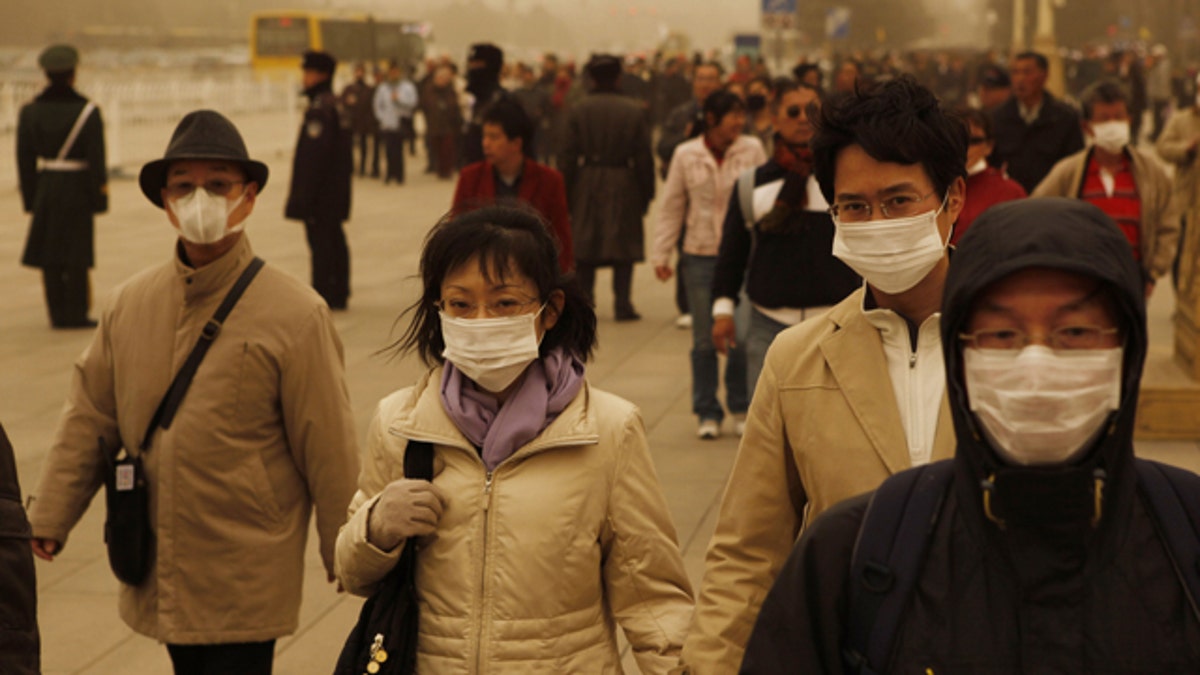
Tourists and residents wear masks as they visit Tiananmen gate during a sandstorm in Beijing, China, Monday, March 22, 2010. (AP Photo / Gemunu Amarasinghe)
OSLO -- The Asian monsoon spreads industrial pollution from China and India around the world by lofting it high into the atmosphere where it may affect the global climate, a study showed on Thursday.
"This is a vivid example of pollutants altering our atmosphere in subtle and far-reaching ways," said William Randel of the U.S. National Center for Atmospheric Research, who led the study in the journal Science.
It said the mid-year Asian monsoon sucks pollutants -- such as black carbon, sulphur dioxide and nitrogen oxides -- from the earth's surface into the stratosphere about 20 to 25 miles high.
Strong stratospheric winds then spread fast-growing amounts of pollution from countries such as China, India and Indonesia around the planet, where it can linger for years before falling to earth or breaking down.
"It's as if there's a hole that sucks the pollution from the ground and rapidly injects it into the lower stratosphere," said Professor Peter Bernath of the University of York in England who was among the authors.
"People suspected it before but this shows that it happens," he told Reuters of the finding by researchers in Canada, Britain and the United States.
WARMER, COOLER
It was unclear what impact the Asian stratospheric pollution might have on the climate. Some particles could have a cooling effect by reflecting sunshine back into space while others might trap heat.
"Overall you don't know which way it could go," Bernath said. And pollution might also affect the ozone layer, which protects the planet from harmful ultraviolet rays.
Some scientists have proposed short-cut solutions to climate change known as geo-engineering -- among them schemes to dim sunlight by spewing sulphur dioxide high into the atmosphere. Others say it is too risky, with possible damaging side effects.
In the past, volcanoes have been shown to spew particles into the stratosphere and giant forest fires can also have the same impact. But industrial pollution has been typically viewed as a local problem, low in the atmosphere.
The study said a projected rise in economic growth, including the opening of many coal-fired power plants in China and India, could mean more pollution sucked up and spread by the Asian monsoon.
Climate change, blamed mainly on a build-up of heat-trapping carbon dioxide in the atmosphere, might also alter the monsoon alongside other impacts projected by the U.N. panel of climate scientists such as droughts, floods and rising sea levels.
The researchers used satellites to monitor hydrogen cyanide -- largely released from burning trees and other vegetation. Flows of hydrogen cyanide exposed how air currents were wafting pollution upwards.
